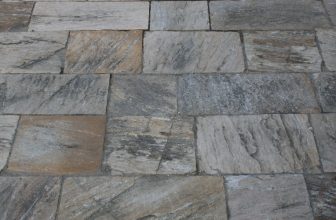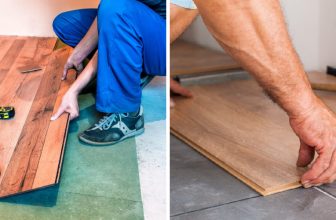How to Clean Basement Floor With No Drain
Are you looking for an effective way to clean the basement floor without a drain? Do you want the job done quickly and easily? Cleaning a concrete basement floor can seem like such a daunting task, especially if there’s no built-in drainage system.
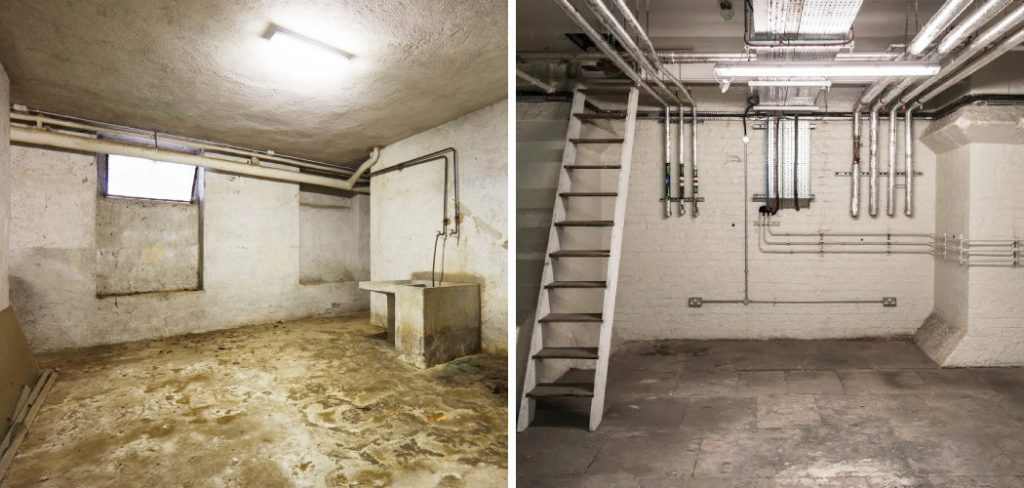
To make life easier, we have some top tips on how to clean basement floor with no drain, using everyday materials that will help keep your basement free of dirt and bacteria. From disposing of excess liquid to removing tough stains, this guide will get the job done in no time!
9 Best Ways on How to Clean Basement Floor With No Drain
1. Start with a Good Sweep:
Before you begin, give your floor a good sweep to get rid of any loose dirt, dust, or debris. Use a broom and dustpan, or for larger areas, try using a dry mop. This will help speed up the process when it comes to cleaning. This also prevents any unwanted particles from sticking to the floor when it gets wet.
2. Spot Clean Stains:
For tough stains like oil, grease, or paint, you’ll need to spot-clean these areas before moving on to the entire floor. Use a mixture of dish soap and warm water, apply it directly to the stain, and let it sit for a few minutes. Then, using a stiff brush or scrubber, gently scrub the area to loosen the stain. Wipe away with a damp cloth and move on to the next stain.
3. Use Vinegar:
Vinegar is a natural disinfectant and has properties that help break down dirt and grime. Mix equal parts white vinegar and water in a bucket and use a mop or cloth to clean the entire floor. Vinegar is also safe for most types of flooring, including concrete. Using vinegar to clean your basement floor is a safe and affordable option.
4. Steam Clean:
If you have access to a steam cleaner, this can be an efficient way to clean your basement floor without a drain. The high heat and pressure help loosen dirt and grime, making it easier to remove with minimal effort. Be sure to follow the manufacturer’s instructions when using a steam cleaner and be cautious of any electrical outlets or cords while cleaning.

5. Use Baking Soda:
Baking soda is another natural option for cleaning your basement floor. Mix equal parts baking soda and water to create a paste, then apply it directly to tough stains or areas with built-up dirt. Let it sit for a few minutes before scrubbing it with a brush and wiping it away with a damp cloth.
6. Try Hydrogen Peroxide:
Hydrogen peroxide is a powerful disinfectant that can help remove stubborn stains and bacteria from your basement floor. Dilute the hydrogen peroxide with water, then apply it to the stained areas using a spray bottle. Let it sit for a few minutes before wiping it away with a cloth or scrubbing it with a brush.
7. Use a Pressure Washer:
If you have access to a pressure washer, this can be an effective way to clean your basement floor without a drain. The high-pressure water helps remove any built-up dirt and grime, leaving your floor looking like new. Be sure to follow safety precautions and use the appropriate pressure setting for your flooring.
8. Create a DIY Drain:
If you have a large amount of liquid on your basement floor, it can be difficult to clean without a drain. In this case, you can create a temporary DIY drain using items you probably already have at home. Use a wet/dry vacuum to suck up the excess liquid, then use a squeegee to push it towards a drain or large bucket.
9. Finish with a Deep Clean:
Once you’ve spot-cleaned and removed all stains and excess dirt, finish off by giving your basement floor a deep clean. Use any of the methods listed above or try using a commercial concrete cleaner for an extra thorough clean. Be sure to let the floor dry completely before walking on it.
Following these tips on how to clean a basement floor with no drain will ensure your basement stays clean and free of any harmful bacteria. Regular cleaning can also extend the life of your flooring and save you from costly repairs in the future. With these easy methods, you can have a sparkling clean basement floor in no time! So why wait? Get started today and enjoy a clean and fresh basement! Happy cleaning!

Additional Tips and Tricks to Clean Basement Floor With No Drain
1. Use a Shop Vac – If you have a shop vac, it can be very useful in cleaning a basement floor with no drain. Simply attach the appropriate attachment and use it to suck up any standing water or debris on your floor.
2. Invest in a Squeegee – A squeegee is another great tool for cleaning a basement floor without a drain. Use it to push excess water toward a floor drain or into a corner of the room for easier cleanup.
3. Use a Mop and Bucket – While not as efficient as a wet/dry vacuum, mopping up excess water can still be effective in removing standing water on your basement floor. Make sure to wring out the mop well and use multiple buckets if needed to avoid spreading dirty water around.
4. Utilize Absorbent Materials – If you have any old towels, rags, or even cat litter on hand, these can be used to absorb excess water on your basement floor. Simply place them over the wet areas and let them soak up the water before disposing of them.
5. Scrub With a Cleaning Solution – For tougher stains or dirt buildup on your basement floor, use a cleaning solution and a scrub brush to help remove them. Make sure to choose a cleaner that is safe for your flooring material.
6. Use Fans or Dehumidifiers – After cleaning up the standing water on your basement floor, use fans or dehumidifiers to help dry out the remaining moisture. This will prevent mold and mildew growth and help your floor dry faster.
7. Regularly Check for Leaks or Moisture – To prevent future standing water on your basement floor, make sure to regularly check for any leaks or excess moisture in the area. Fixing these issues early on can save you from having to repeatedly clean up a wet basement floor.
Following these tips and tricks can help you effectively clean your basement floor without a drain. Remember to always prioritize safety and use appropriate tools and cleaning solutions for your specific flooring material. And don’t forget to regularly check for any issues that may cause standing water in the future.
Frequently Asked Questions
What Happens if My Basement Floor Doesn’t Have a Drain?
Not all basements are equipped with floor drains, and this can present some challenges when it comes to cleaning. When a basement doesn’t have a drain, any liquids or water spills may accumulate on the surface and potentially cause damage over time. It is important to regularly mop up any spills and ensure proper ventilation to prevent moisture buildup.
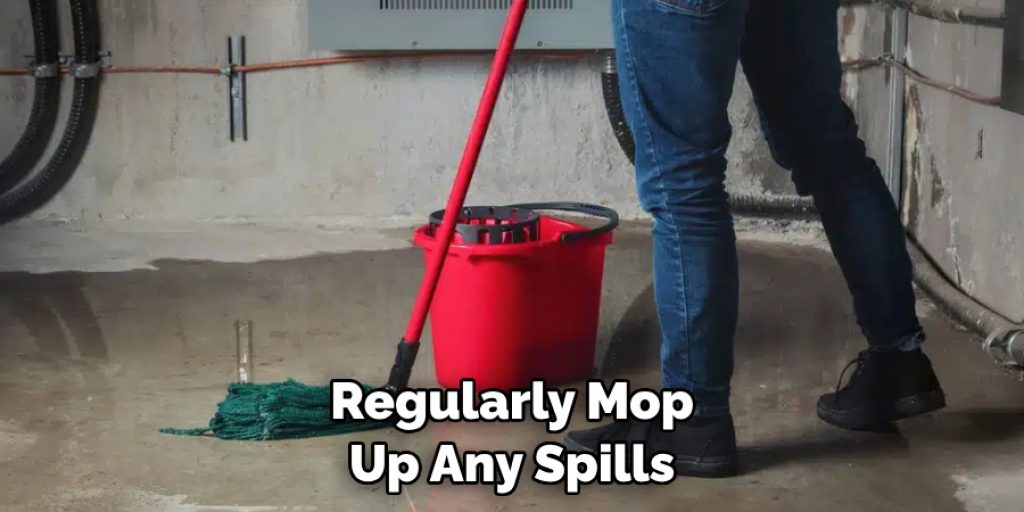
Can I Use Regular Cleaning Products on My Basement Floor?
It is generally safe to use regular cleaning products on most types of basement floors, such as concrete, tile, or linoleum. However, it is important to read the labels of your cleaning products and avoid using any harsh chemicals that may damage or discolor your floor. For more delicate flooring materials, it is best to consult the manufacturer’s recommendations for cleaning.
What Should I Do if My Basement Floor Has Stubborn Stains?
If your basement floor has stubborn stains that cannot be removed with regular cleaning products, there are a few alternative methods you can try. One option is to mix equal parts hydrogen peroxide and water, apply it to the stain, and let it sit for a few minutes before scrubbing and rinsing. Another option is to use a paste made of baking soda and water, which can be rubbed onto the stain and left to dry before wiping away with a damp cloth.
How Often Should I Clean My Basement Floor?
The frequency of cleaning your basement floor will depend on factors such as the level of foot traffic and any potential spills or messes. As a general rule, it is recommended to sweep or vacuum the floor at least once a week and mop with a mild cleaning solution every 2-3 weeks. However, if you notice any areas that require more frequent cleaning, adjust accordingly.
What Can I Do to Prevent Water Damage on My Basement Floor?
To prevent water damage on your basement floor, it is important to address any potential sources of moisture and keep the area well-ventilated. This may include fixing any leaks or cracks in the walls or floors, using a dehumidifier to reduce humidity levels, and ensuring proper drainage around your home’s foundation.
Regularly cleaning and maintaining your basement floor can also help prevent water damage. Overall, taking proactive steps to prevent water buildup in your basement will save you time, money, and potential headaches in the long run.
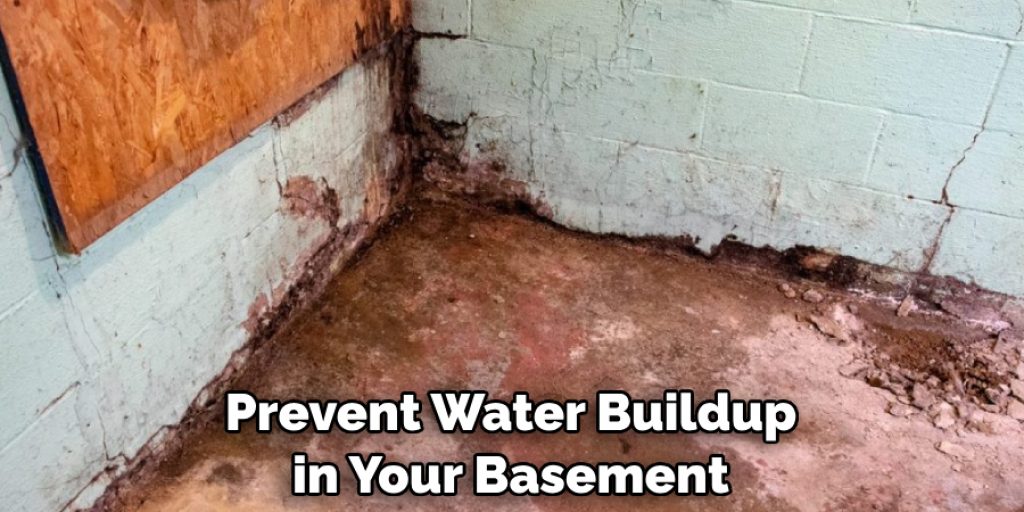
Conclusion
All in all, knowing how to clean basement floor with no drain is essential for maintaining a safe and healthy living space. By following these tips and frequently cleaning your basement floor, you can ensure its longevity and prevent any potential damage or hazards.
If you have any further concerns or questions, be sure to consult a professional for additional guidance. Now go ahead and give your basement floor the TLC it deserves! So, always take care of your basement floor, and it will take care of you. Happy cleaning!

